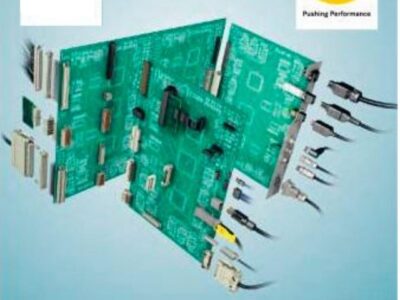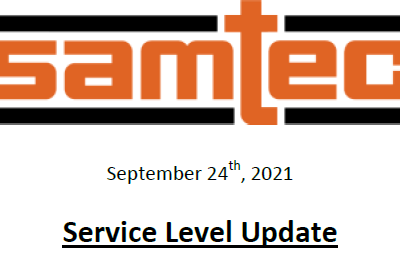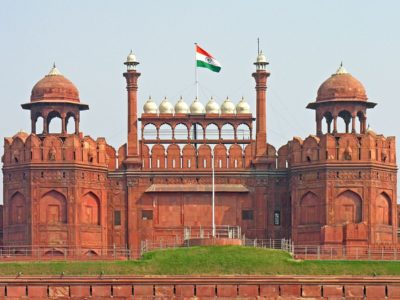RAILWAY SECTOR IN INDIA
Indian Railways has grown manifold since its inception in 1853. Today, it is a departmental commercial undertaking of the GoI under the overall control of the Railway Board.
During 2018-19, railways capital expenditure of 1,48,528 crore is earmarked for 18,000 km of doubling, third and fourth line works, 5,000 km of gauge conversion, 3,600 km of track renewals and rolling stock programme for 12,000 wagons, 5,160 coaches, and 700 locomotives.
The work on the eastern and western Domestic Freight Corridor (DFC) is going on along with the redevelopment of 600 major railway stations. In addition, 16,800 crore has been allotted for MRTS and Metro projects.
The Indian Railways manufactures a lot of its rolling stock and heavy engineering components. As with most developing economies, the main reason is import substitution of expensive technology related products. The six manufacturing plants of the Indian Railways, called Production Units, are managed directly by the ministry. These six production units (PUs) are each headed by a General Manager (GM), who also reports directly to the Railway Board.

List of Public Sector Railway Production Units in India

Other independent units of Indian Railways are:
§ Central Organisation for Railway Electrification (CORE), Allahabad
§ Central Organisation for Modernisation of Workshops (COFMOW), New Delhi
Research Design and Standards Organization (RDSO), Lucknow is the R&D division of Indian
Railways and functions as the technical advisor to Railway Board, Zonal Railways, and Production Units.
Central Organisation for Modernisation of Workshops (COFMOW)
COFMOW was established under the Ministry of Railways by the Govt. of India for modernizing the Indian Railway workshops. The modernization project was funded through the World Bank credits. Since its establishment in 1979, COFMOW has assisted in modernizing Indian Railways’ production units and maintenance workshops. This has involved purchasing over 9900 machines valued at ₹8,970 million. It has thus emerged as a leading specialized organization in the fields of manufacturing and maintenance technologies.
COFMOW is now the designated organisation of Indian Railways for selection, procurement and induction of modern workshop technologies and machinery and plants.
Machinery and Plants (M&P) Budgeting at Indian Railways:
Railways and production units (PUs) must submit their consolidated Preliminary M&P Programme for items costing more than ₹10 lakhs each and above each for Zonal Railways and ₹30 lakhs and above each for production units and all Road vehicles irrespective of their cost through the M&P Portal maintained by the Railway Board.
For items costing up to ₹10 lakhs each and Electronic in-motion weigh bridges costing up to ₹20 lakhs each (excluding Road vehicles irrespective of their cost) can be sanctioned by Zonal Railway under GM’s Powers. In case of production units, items costing up to ₹30 lakhs each (excluding road vehicles irrespective of their cost) can be sanctioned under the GM’s Powers. The monetary limits for submission of proposals to RB are revised from time to time as per the latest delegation of powers.
There are four categories of machines procured under the M&P Program:
Category A: These are sophisticated and unique machines requiring an extensive market survey and specialized knowledge of machine tools. They are procured by COFMOW.
Category B: Machines such as EOT cranes, welding machines, compressors, road mobile cranes and diesel gensets that figure frequently in the M&P Programs of the railways should be carefully procured, duly eliminating unreliable vendors from a highly competitive market. In this case,when a procurement is bulked, the volumes involved afford a scale economy.
As the nodal procurement agency, COFMOW should consider the following options, apart from the normal procurement option :
— Entering into running / rate contracts for two to three years with the necessary price variation clause and place orders against the requirements of Zonal Railways / PUs.
— In case of machines where it is becoming difficult to establish reliable suppliers, COFMOW
may also examine the ILM option (install, maintain and lease), which can be availed by the consignee – Railways or PUs – in the same manner construction companies hire cranes, front end loaders and other machines on a long-term basis.
— Category C: Special machines of unique and sophisticated nature for which the domain knowledge may not exist with COFMOW and where the requirements cannot be bulked, come under this category. These can be bought by the user railways, after seeking dispensation from COFMOW. Such dispensation should be sought from COFMOW well in time, so that the procurement is not delayed.
— Category D: Other machines of smaller value below a certain limit barring certain excluded items, as stipulated by RB, as well as medical equipment whose procurement is best left to the user Railway, unless it is felt that such decentralization will compromise on quality or decelerate procurement.
When a machine is proposed in the M&P Program, the user should indicate the category against each machine proposed along with his preference regarding the mode of procurement. In all the categories of M&Ps, except category D, dispensation from COFMOW is essential for Zonal Railways to arrange procurement by themselves.
Railway proposed investment over FY17-20: Electrification and construction of a broad gauge line to remain a focus area for railways

Indian Railways is targeting 38,000 km electrification over the next five years versus the current annual run rate of 2,000 km. These indicate significant growth potential in the railways sector.
During FY19, Indian Railways’ capital expenditure has been estimated at ₹1.48 lakh crore, large part of which would be allocated to capacity creation — Capacity constraints would be tackled through 18,000km of doubling, third and fourth line works
— Almost the entire railway network would be converted into broad gauge with 5,000km of gauge conversion.
The Railways would also undertake the following initiatives to enhance passenger comfort and safety:
— Electrification of rail network spanning 4,000km by the end of FY18
— Rolling stock for Dedicated Freight Corridors comprising 12,000 wagons, 5,160 coaches and 700 locomotives to be procured during FY19


Electric Locomotives: It has been decided to produce only new generation state-of-art three-phase electric locomotives in the future. These new generation locos save up to 20% electricity consumption owing to their regenerative braking features.
Diesel Locomotives: Horse power of diesel locomotives has been increased from 2600 to 4500 HP.
These locos have state-of-art three phase AC-AC Insulated Gate Bipolar Transistor (IGBT) based traction system. Moreover, other improvements such as dual cab, air conditioner in loco cabs, auxiliary power unit (APU), hotel load and distributed power control system (DPCS) are provided in locomotives.
Metro Projects in India: Growing Opportunity for Coach Building
The government data says that at present, around 324 km of metro rail is operational in Delhi and NCR, Gurgaon, Kolkata, Chennai, Bengaluru, Jaipur and Mumbai.
Around 550 km is under construction in various cities, including Delhi and NCR, Kolkata,Chennai, Jaipur, Mumbai, Kochi, Ahmedabad, Nagpur and Lucknow.
Around 3,500 metro cars have been ordered by domestic metro operators across 13 cities. Nearly 3,000 metro cars are likely to be procured over the next five years across cities with Mumbai and Delhi ordering major quantities, said sources.
The union government is encouraging cities with population above two million to develop mass transit systems; it is expected that around 50 cities will have population over two million by 2050.
These cities will evaluate to adopt metro, monorail or light rail vehicle-based transit system in the coming years. For metros alone, a strong demand will be created with Indian metro rail operators procuring more than 3000 metro cars in the next five years.
The demand for metro coach is seeing very good growth in the Indian market. In fact, new players such as ICF want to grab a decent share in the growing metro coach market, which is currently dominated by multinational companies such as Alstom and Bombardier, a couple of Chinese companies and the state-owned BEML.
ICF entry into the metro railway system is taking time as most of them in the country operate in standard gauge (SG). ICF had never built an SG coach as it operates predominantly in the broad gauge space (it, however, supplies coaches to Kolkata Metro which operates in broad gauge).
There is a big difference in design for SG (1,435 mm) and BG coaches (1,676 mm). They believe that they can bring down price by ₹3–4 crore per coach (each is priced at around ₹10 crore currently) without affecting the quality.
While policy measures such as a streamlined tender/bids process, one window investment portals from the state governments and the Ministry of Urban Development’s (MoUD) push for metro suppliers to “Make in India” have phenomenally improved the ease of operating businesses. The new taxation regime has done much to clean up outdated taxation policies.
India is emerging as a key region for manufacturing coaches. As a market, rapid modernisation, adoption of newer, safer and more sustainable technology, rapid urbanisation places India high on the market potential index. Location-wise, having a base in India also helps companies assuredly deliver projects across Asia, the Middle East and even beyond. Companies have been able to tap into the large, skilled talent pool available in the country- young talent pool can help in developing solutions for projects worldwide.
FDI is permitted in the following activities of the Railway Transport sector :
· Suburban corridor projects through PPP
· High speed train projects
· Dedicated freight lines
· Rolling stock including train sets, and locomotives or coaches manufacturing and maintenance facilities
· Railway Electrification
· Signaling systems freight terminals
· Passenger terminals
· Infrastructure in industrial park pertaining to railway lines or sidings including electrified railway lines and connectivity’s to main railway line
· Mass Rapid Transport Systems
Metro Projects Planned in the Future


Key Players in the Indian Metro Railways Manufacturing Sector:
1. Alstom Transport India limited
Alstom has a strong presence in India. Currently, the company is executing metro projects in several Indian cities including Chennai, Kochi and Lucknow where it is supplying Rolling Stock manufactured out its state of the art facility at Sri City in Andhra Pradesh. In the Mainline space, Alstom is executing signalling & power supply systems for the 343 km section on the World Bank funded Eastern Dedicated Freight Corridor. Phase 1 in the construction of the new electric locomotive factory for manufacturing and supply of 800 units of high horse power locomotives at Madhepura in Bihar is complete while the depot at Saharanpur is also ready to commence production. Alstom has set up the Engineering Centre of Excellence at Bengaluru, and this coupled with a strong manufacturing base as well as localized supply chains, is uniquely positioned to serve customers across the globe.
Alstom Transport India Limited (ATIL) was set up in 2011 to manufacture rolling stock for the Indian metro market. The company is a wholly-owned subsidiary of Alstom Transport Holding BV, Netherlands and has its manufacturing facility located in SriCity, Andhra Pradesh and Coimbatore, Tamil Nadu. ATIL has an established presence in the transport segment with the support of Alstom Group.
Alstom has also set up an electric locomotive plant at Madhepura (Bihar) and is setting up maintenance depots at Saharanpur (Uttar Pradesh) and Nagpur (Maharashtra) to supply Indian Railways with 800 double-section freight electric locomotives with associated long-term maintenance.
This project is one of the strongest endorsements of the Make in India policy of the government because of the highly localised supplier base that has been put in place to execute it. Almost 90% of the components used to manufacture these locomotives are being sourced from Indian companies.
The engine is made of about 2,500 components, of which 85–90% are sourced locally. Component suppliers includes transformers from ABB, couplers from Faiveley and brakes from Knorr Bremse.
Alstom continues to look at opportunities to further increase the localisation aspect of the project.
The Madhepura locomotive project also includes large-scale development of local infrastructureand facilities that will empower the local economy of Bihar as well. Alstom is adding to thistransformation by undertaking community-building projects in Madhepura to make sure thebenefits of industry seep through to the grassroots of this remote region.
Additionally, Sri City plant is not just a manufacturing unit for our Indian projects, it is also a base for exports. With an annual production capacity of 240 cars and over 500 employees, this plant is Alstom’s base for manufacturing rolling stock for national and international projects – another strong marker of Alstom’s commitment towards the Make in India initiative.
ATIL has a sizeable pending order book of around ₹5,622 crore as on November 2017, which provides revenue visibility over the medium term. This also includes rolling stock (for Chennai,Lucknow and Kochi projects) and associated infrastructure systems/equipment/services (for Chennai, Lucknow, Delhi NCR, Jaipur and Kochi projects) for key metro rail projects being developed in India.
2. Bombardier
Bombardier is one of the few rail companies in India which truly supports Indian government’s Make in India campaign. Bombardier Transportation is not only making rail products and solutions for the Indian market which are manufactured in India but they are also exported from India. Bombardier signifies ‘Make in India for India’ and ‘Make in India for the World’.
Bombardier’s Savli site currently makes metro cars for Delhi Metro, and exports commuter cars and bogie components to Australia, Brazil and Saudi Arabia. Its propulsion and controls production / engineering site at Maneja in Vadodara delivers propulsion solutions for Mumbai suburban rail network along with supplying electricals to Indian Railways for more than a decade. Bombardier Transportation has delivered 614 metro cars to Delhi Metro Rail Corp. (DMRC) with an additional order of 162 metro cars from Delhi Metro. Bombardier is the largest supplier of signalling solutions to Delhi Metro. Bombardier is closely pursuing various metro projects in Delhi, Ahmedabad, Mumbai, Nagpur, Pune, Vijayawada, Vizag and Bengaluru.
In 2015, Bombardier opened an information services global hub and new rail control solutions centre in Gurgaon. In April 2017, Bombardier Transportation opened a new engineering centre in Hyderabad, India. This new facility also focuses on the development of metro and electrical multiple unit (EMU) product platforms and engineering design for transportation projects locally and globally.

Bombardier Transportation Propulsion and Controls in India started its operations in 1997 with the establishment of Maneja site in Vadodara, Gujarat and has since become one of the leading companies in the rail equipment business offering a wide variety of propulsion and control equipment to the Indian Railways and to its rolling stock division.
Their journey in India started with a mere two products and within a decade and a half it now supplies twelve products to the Indian railways, which are all manufactured locally. In addition to this, support is also provided to Indian Railway customers with aftersales services and spare parts. Winning the Delhi Metro contract paved its way into the Indian Metro Market and adding substantial expertise to the site. Mumbai Railway Vikas Corporation (MRVC) and Queensland Rail (Australia) projects are currently under execution at the site.
3. BEML
BEML Limited’s Rail Coach Factory situated in Bengaluru, India is the first all steel integrated rail coach factories established by the Government of India during 1948. It was set up with the assistance and technical know-how imparted by M/s MAN, Federal Republic of Germany. This factory was established to indigenously manufacture the passenger rail coaches (of broad gauge) for the use of Indian Railways.
During the implementation of the first urban transit project by DMRC for its Phase-1, BEML and Rotem signed a Technical Collaboration Agreement during 2002 and BEML became the first to indigenously manufacture Metro Cars for DMRC RS1 contract and manufactured 220 Metro Cars.
Later, to indigenize the manufacture and integration of the Metro train sets, BEML obtained a developmental order from DMRC to develop 8Nos. intermediate cars. The successful completion of this developmental order strengthened BEML as an indigenous source for Metro Cars.
As on date, BEML has supplied over 1,100 Metro Cars for various projects in India. BEML’s efforts in successful completion of indigenization of Rolling Stock and the augmentation of its production facilities have been lauded by the customers.
With the experience gained in manufacture, integration and testing of Metro Cars, BEML expanded its role in the Metro segment and holds a good market share in India. Since inception,this Rail Coach Factory has manufactured & supplied over 17,000 mainline passenger coaches of various types for long distance mainline routes of Indian Railways.
In addition, BEML has been manufactured and supplied over 800 of EMUs to Indian Railways for use in its sub-urban and mainline routes. BEML has also manufactured and supplied self propelled equipment 20 Rail Bus (for public transport), over 40 other maintenance vehicles to Indian Railways and over 120 8W-DHTCs (for OHE inspection & maintenance) to Indian Railways and various Metro Corporations in India.
Dedicated Freight Corridors: Growing Opportunity for Wagon Manufacturers
Railways is ramping up its freight carrying capacity by 1100 million tonne in the next two years as it is hoping to complete the construction of 3,300km-long dedicated freight corridors by 2020 extended to 2021 due to covid.

Indian Railways is set to put out its largest tender for 22,000 wagons at a cost of at least ₹7,000 crore in the current financial year that could see big orders for Texmaco Rail and Engineering,Titagarh Wagons, Jindal Rail and Jupiter Wagons among other wagon makers.
The orders would be through the reverse e-auction model, and if the lowest bidder isn’t able to serve the entire order, the second-lowest bidder would get a chance without a fresh tendering process
The railways ministry hopes the bulk tender would help it reduce the cost of wagons by at least 15%-20%. On an average, the ministry procures 8,000 wagons a year.
Key players in the railway wagon manufacturing in India are:
Titagarh Wagons : Titagarh Wagons Limited is primarily engaged in the business of manufacturing Railway Wagons & EMUs (Coaches). It makes a wide variety of wagons including hopper, covered, open top, container flat, tank, flat and special purpose wagons and coaches constituting ~90% of company revenues. The company would be a key beneficiary of railway capex on rolling stock wagons.
Texmaco : Texmaco is primarily engaged in the business of manufacturing freight cars including stainless steel cars and custom built special purpose freight cars. It has diversified into manufacturing “Loco Shell” for electric locomotives. It has made a strategic acquisition of 49% equity stake in Kalindee and is in the process of merger of the two companies. Rolling stock division constituted ~60% revenue. The company would be a key beneficiary of railway capex on Rolling stock wagons.
High Speed Rail: Mumbai-Ahmedabad
The Mumbai-Ahmedabad high-speed rail corridor is an under-construction high-speed rail line connecting the cities of Ahmedabad, Gujarat, and India’s economic hub Mumbai, Maharashtra. It will be India’s first high-speed rail line.
The construction of the corridor began in August 2018 by acquiring land for Sabarmati terminus, and the first high-speed train is scheduled to leave for its first run on 15 August 2022. The corridor will use Japan Railways Shinkansen E5 Series Electric multiple unit for its rolling stock. Most of the corridor will be elevated, except for a 21-km underground tunnel between Thane and Virar, of which 7 km will be under the sea. The undersea tunnel was chosen to avoid damaging the thick vegetation present in the area. The corridor will begin at the underground station in the Bandra-Kurla Complex in Mumbai, and then traverse 21 km underground before emerging above the ground at Thane.
The Mumbai-Ahmedabad corridor, along with five other high-speed rail corridors, was introduced for a feasibility study in the 2009–2010 rail budget. A 650-km long high-speed rail corridor was proposed to run from the Pune railway station to Ahmedabad railway station via Mumbai. The point at which this route would touch Mumbai was to be decided when the feasibility report was prepared.
The pre-feasibility study for the Ahmedabad–Mumbai–Pune corridor was completed by a consortium of RITES, Italferr and Systra. The top speed expected for the corridor was up to 350
km/h. The proposed stations included Lonavala on Mumbai–Pune section and Surat, Bharuch and Vadodara on Mumbai–Ahmedabad section. It was proposed to have 32 services between Mumbai and Ahmedabad.


High Speed Rail: Mumbai-Ahmedabad
The Mumbai-Ahmedabad high-speed rail corridor is an under-construction high-speed rail line connecting the cities of Ahmedabad, Gujarat, and India’s economic hub Mumbai, Maharashtra. It will be India’s first high-speed rail line.
The construction of the corridor began in August 2018 by acquiring land for Sabarmati terminus, and the first high-speed train is scheduled to leave for its first run on 15 August 2022. The corridor will use Japan Railways Shinkansen E5 Series Electric multiple unit for its rolling stock.
Most of the corridor will be elevated, except for a 21-km underground tunnel between Thane and Virar, of which 7 km will be under the sea. The undersea tunnel was chosen to avoid damaging the thick vegetation present in the area. The corridor will begin at the underground station in the Bandra-Kurla Complex in Mumbai, and then traverse 21 km underground before emerging above the ground at Thane.
The Mumbai-Ahmedabad corridor, along with five other high-speed rail corridors, was introduced for a feasibility study in the 2009–2010 rail budget. A 650-km long high-speed rail corridor was proposed to run from the Pune railway station to Ahmedabad railway station via Mumbai. The
point at which this route would touch Mumbai was to be decided when the feasibility report was prepared. The pre-feasibility study for the Ahmedabad–Mumbai–Pune corridor was completed by a consortium of RITES, Italferr and Systra. The top speed expected for the corridor was up to 350 km/h. The proposed stations included Lonavala on Mumbai–Pune section and Surat, Bharuch and Vadodara on Mumbai–Ahmedabad section. It was proposed to have 32 services between Mumbai and Ahmedabad.
TODAY WE ARE MOVING WITH PHASE WISE LAUNCH.
Other Private Participants in the Railway manufacturing Sector
Below are some of the key component manufacturing companies catering to the Railways sector:

Other Private Participants in the Railway manufacturing Sector
Below are some of the key component manufacturing companies catering to the Railways sector:
IN NEWS: (SOURCE MINT 14-01-2021)
IRFC to go public on 18 Jan, may raise up to ₹4,600 crore
- The firm said that out of the money raised through the IPO, around ₹1,544.46 crore will go the government
- The price band of the issue has been fixed at ₹25-26 per equity share
- The initial public offering (IPO) of state-owned Indian Railway Finance Corp. (IRFC) worth about ₹4,600 crore will hit the market on 18 January.
- The price band of the issue has been fixed at ₹25-26 per equity share. The issue is of up to 1.78 billion shares, comprising a fresh issue of up to 1.18 billion equity shares and offer for sale (OFS) of up to 594 million shares by the government, the company said. The issue will close on 20 January. The anchor book will open on Friday due to interest from various investor communities.
- IRFC coming up for listing with a ₹4,600 crore-plus issue in a price band of ₹25-26 per share. Anchor book on Jan 15 and the main book from Jan 18-20,” department of investment and public asset management (Dipam) secretary Tuhin Kanta Pandey said in a tweet on Wednesday. IRFC is the first government-owned non-banking financial company to go public.
- The company’s managing director Amitabh Banerjee said that out of the money raised through the IPO, around ₹1,544.46 crore will go the government, considering the top price band of ₹26. The remaining ₹3,088.92 crore will go to the company’s balance sheet.
- The net proceeds from the IPO will be used to augment the company’s equity capital base to meet its future capital requirements arising out of growth in their business, the company said in its draft red herring prospectus.
- “Post IPO, the business of IRFC will remain unchanged. IPO is just a stage in the journey of IRFC. Ministry of Railways will continue to remain our principal client. We shall definitely contribute to the infrastructure development of Indian Railways. As far as the IPO proceeds are concerned, it will be handy in building up my net worth that will enable us to raise 10 times of the money from the market to fund the capex requirement,” Banerjee told Mint.
- It is also open to diversifying its portfolio to any project that has backward or forward linkage with Indian Railways. “We are open to funding any sector that goes towards carrying capacity of the Indian Railways, in freight and passenger segment, logistics, multimodal logistics parks. We want to be a partner in that growth story also. Our primary goal is to cater to funding requirement of Indian Railways,” he said.
- IRFC was set up in 1986 to raise money from the market and the capital expenditure requirement of Indian Railways. It is a dedicated market borrowing arm of the railways. It finances the acquisition of rolling stock assets—passenger, freight train sets—and project assets of the national transporter such as capacity augmentation projects, dedicated freight corridor, high speed rail corridor.
IN NEWS: (SOURCE MINT 14-01-2021)
IRFC to go public on 18 Jan, may raise up to ₹4,600 crore
- The firm said that out of the money raised through the IPO, around ₹1,544.46 crore will go the government
- The price band of the issue has been fixed at ₹25-26 per equity share
- The initial public offering (IPO) of state-owned Indian Railway Finance Corp. (IRFC) worth about ₹4,600 crore will hit the market on 18 January.
- The price band of the issue has been fixed at ₹25-26 per equity share. The issue is of up to 1.78 billion shares, comprising a fresh issue of up to 1.18 billion equity shares and offer for sale (OFS) of up to 594 million shares by the government, the company said. The issue will close on 20 January. The anchor book will open on Friday due to interest from various investor communities.
- IRFC coming up for listing with a ₹4,600 crore-plus issue in a price band of ₹25-26 per share. Anchor book on Jan 15 and the main book from Jan 18-20,” department of investment and public asset management (Dipam) secretary Tuhin Kanta Pandey said in a tweet on Wednesday. IRFC is the first government-owned non-banking financial company to go public.
- The company’s managing director Amitabh Banerjee said that out of the money raised through the IPO, around ₹1,544.46 crore will go the government, considering the top price band of ₹26. The remaining ₹3,088.92 crore will go to the company’s balance sheet.
- The net proceeds from the IPO will be used to augment the company’s equity capital base to meet its future capital requirements arising out of growth in their business, the company said in its draft red herring prospectus.
- “Post IPO, the business of IRFC will remain unchanged. IPO is just a stage in the journey of IRFC. Ministry of Railways will continue to remain our principal client. We shall definitely contribute to the infrastructure development of Indian Railways. As far as the IPO proceeds are concerned, it will be handy in building up my net worth that will enable us to raise 10 times of the money from the market to fund the capex requirement,” Banerjee told Mint.
- It is also open to diversifying its portfolio to any project that has backward or forward linkage with Indian Railways. “We are open to funding any sector that goes towards carrying capacity of the Indian Railways, in freight and passenger segment, logistics, multimodal logistics parks. We want to be a partner in that growth story also. Our primary goal is to cater to funding requirement of Indian Railways,” he said.
- IRFC was set up in 1986 to raise money from the market and the capital expenditure requirement of Indian Railways. It is a dedicated market borrowing arm of the railways. It finances the acquisition of rolling stock assets—passenger, freight train sets—and project assets of the national transporter such as capacity augmentation projects, dedicated freight corridor, high speed rail corridor.








